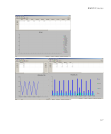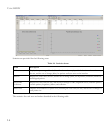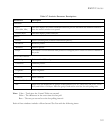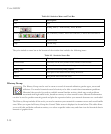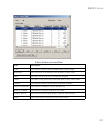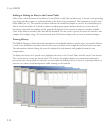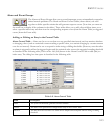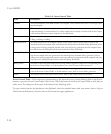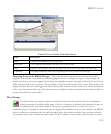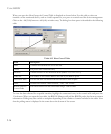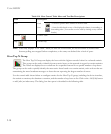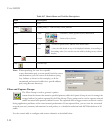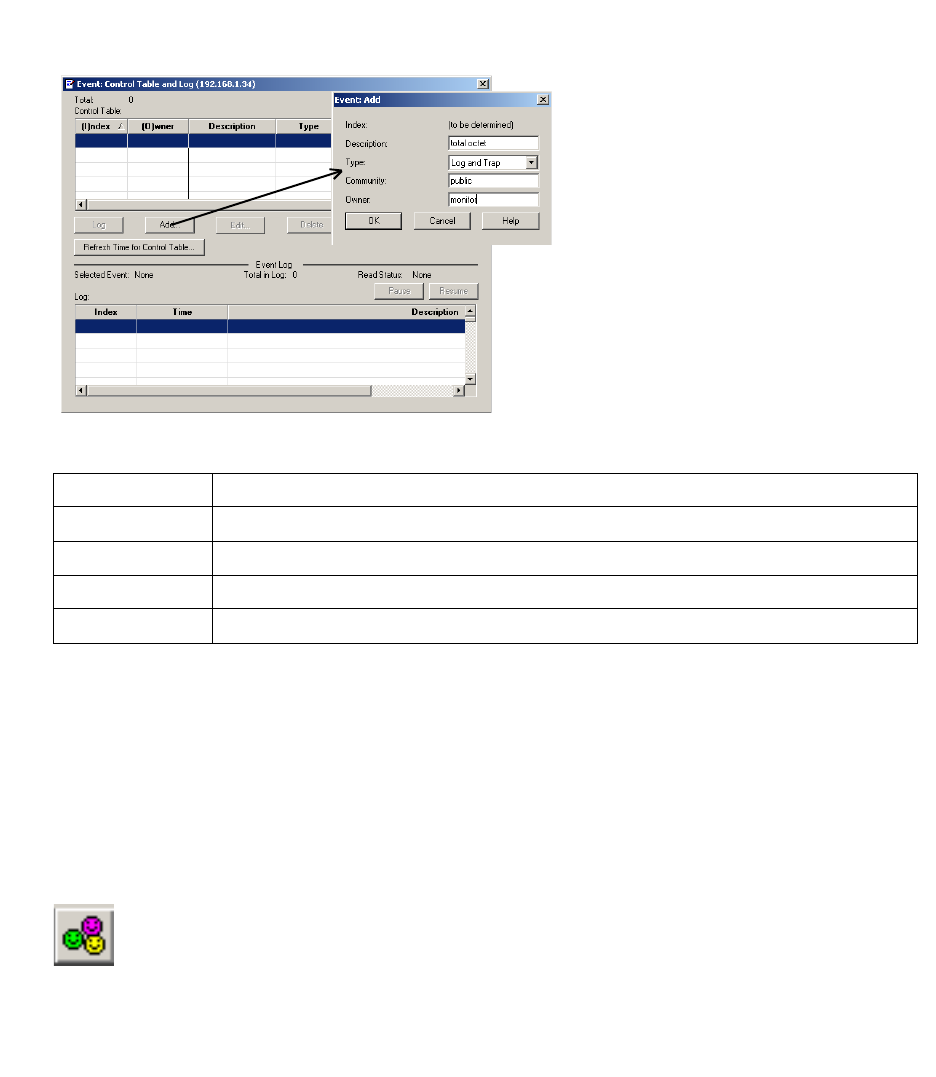
RMON U
TILITIES
9-15
Displaying Events in the RMON Manager – The Event determines the action to take when an alarm is
triggered. The response to an alarm can include logging the alarm or sending a message to a trap manager. To
display each time an event was triggered by an alarm, first highlight an entry in the upper half of the Event Control
Table, and then click on the Log button. The Log Table at the bottom half of the Event Control Table window will
display each time this event was triggered. It shows the log index number, the time of an event, and the description
of the event that activated this entry. (Note that there are no display windows associated with the Alarm and Event
groups other than the control tables.)
Host Group
The Host Group can maintain statistics on all devices found on the network, with the only limitation
being the amount of available buffer space. A full set of statistics, as defined in the Statistics Group, can
be maintained for each unique address. This group is generally used as one of the last steps in
troubleshooting. For example, if a network device has triggered a predefined event, you can configure the RMON
probe to collect host information for the media interface where the problem occurred. After you have collected
the pertinent data, it can be sorted for analysis based on MAC address, creation order, selected statistic, or errors.
Table 9-12 Event Control Table Index Entries
Field Description
Index A number that identifies the row in the table.
Description A text comment that describes the entry in the Control Table.
Type The type of action that is taken for the alarm. This can be None, Log, Trap, or Log and Trap.
Community The SNMP community name that a trap manager must use to receive trap messages.



